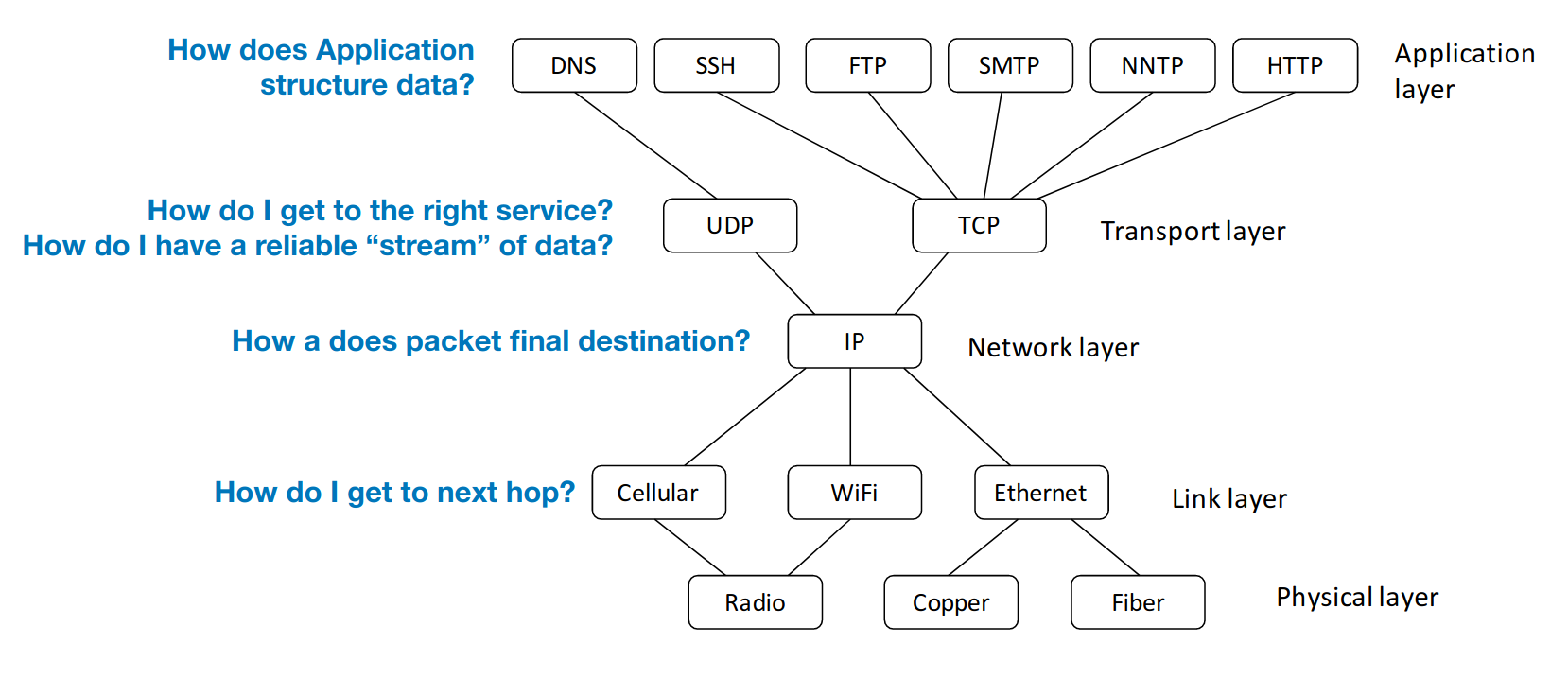Internet Protocol Security #
The Internet #
- Global protocol that provides best-effort delivery of packet between connected hosts
- Packet: structured sequence of bytes
- Header: metadata used by network
- Payload: user data to be transported
- Every host has a unique identifier - IP address
- Series of routers receive packets, look at header destination address, and send it one hop towards destination IP address
Network protocols #
- Define how hosts communicate in published network protocols
- Syntax: how communication is structured (e.g. format and order of messages)
- Semantics: what communication means.
- Actions taken on transmit or receipt of message, or when timer expiers.
- What assumptions can be made.
Protocol layering #
- Networks use stack of protocol layers
- Each layer has different responsibility
- Layers define abstraction boundaries
- Lower layers provide services to layers above
- Don’t care what higher layers do
- Higher layers use services of layers below
- Don’t worry about how it works
OSI 5 layer model #
Physical
- How do bits get translated into electrical, optical, or radio signals.
Link (typically: ethernet)
- How to get packet to the next hop. Transmission of data frames between two nodes connected by a physical link.
- Assumes: local nodes are physically connected
- Task: transfer bytes between two hosts on physically connected network
- MAC address: 6-byte address given to physical hosts, assigned at manufacture time
- Frame contains:
- Destination MAC
- Source MAC
- Data type (usually “IP”)
- Data
- CRC checksum
- Originally: transmission was broadcast, every local computer got every packet
- Now: switched ethernet
- Switch learns at which physical port each MAC address lives based on MAC source addresses
- If switch knows MAC address M is at port P, it will only send a packet for M to port P
- If not, sends packet everywhere
Network
- Repsonsible for packet forwarding. How to get a packet to the final destination when there are many hops along the way.
- Assumes: frames can be sent on a local network
- Task: let any two computers exchange packets
- IPv4 header:
- Instruct routers and hosts what to do with a packet
- All values are filled in by the sending host
- ARP: Address Resolution Protocol
- How do we map IP addr -> MAC addr?
- How do routes learn where IPs are located?
Transport
- Allows a client to establish a connection to specific services (e.g. web server on port 80): provides reliable communication
Application
- Defines how individual applications communicate. For example, HTTP defines how browsers send requests to web servers.
Interaction of layers:

Packet encapsulation #
- Protocol N1 can use the services of lower layer protocol N2
- A packet P1 of N1 is encapsulated into a packet P2 of N2
- The payload of P2 is P1
- The control information of P2 is derived from that of P1